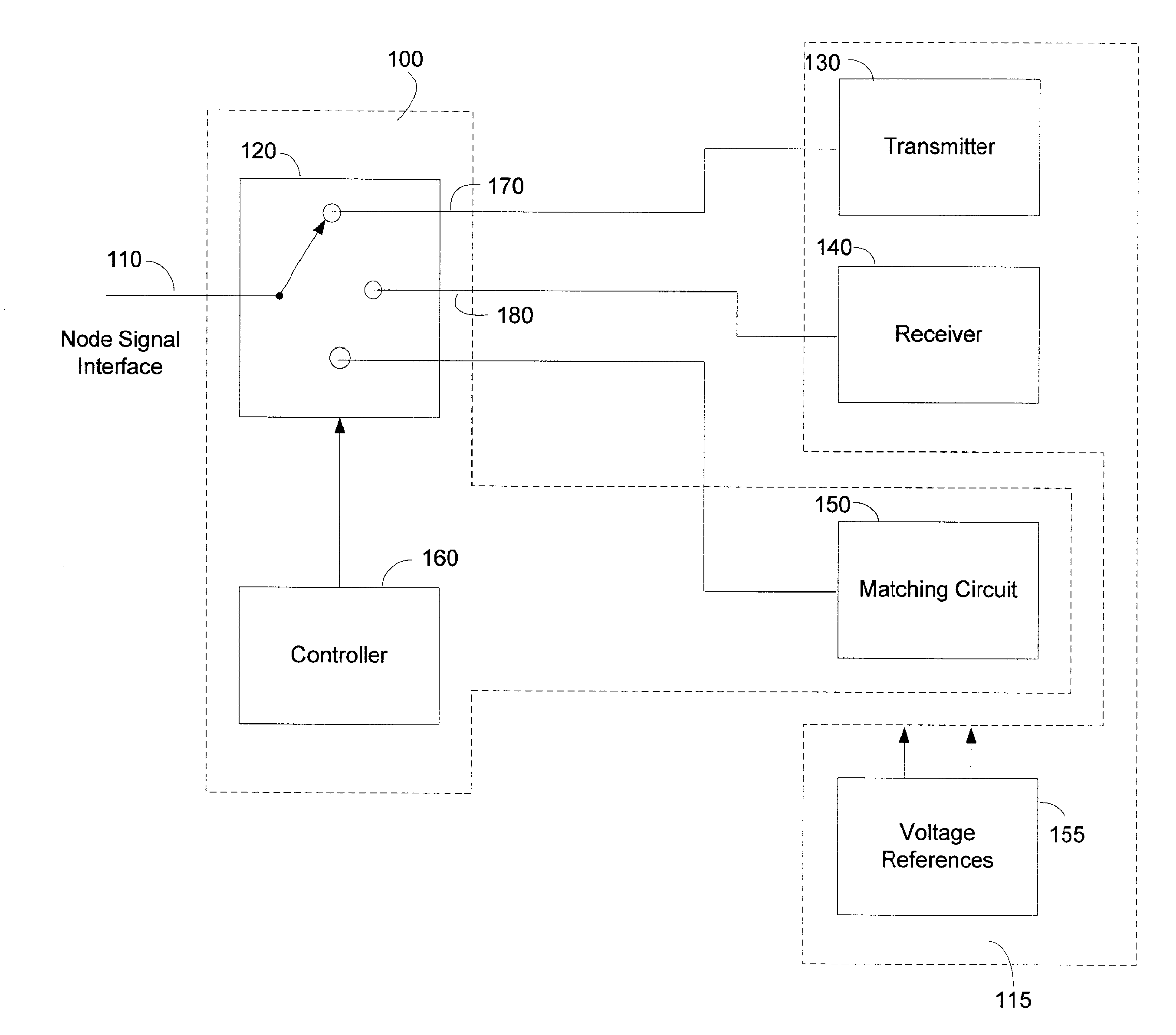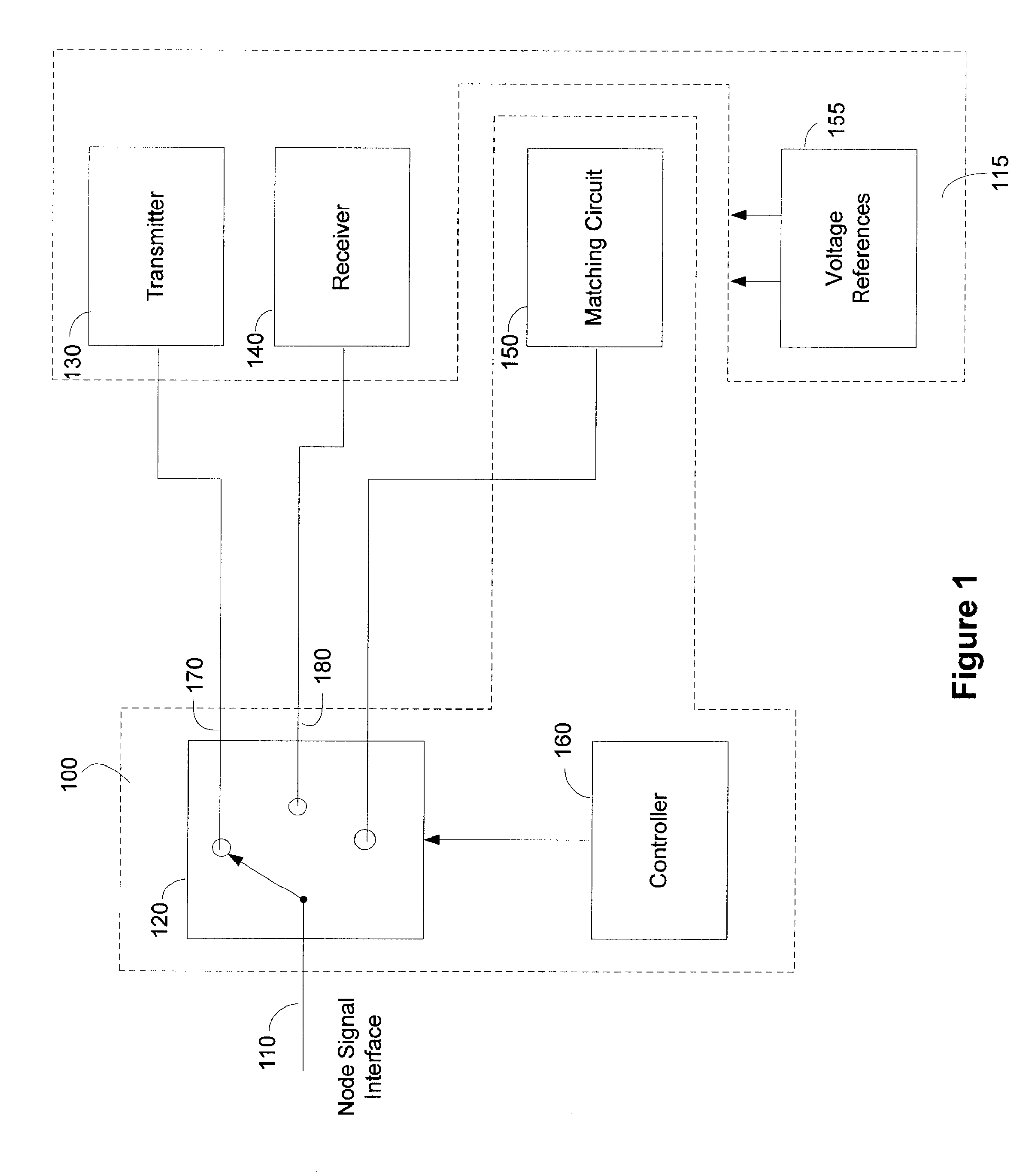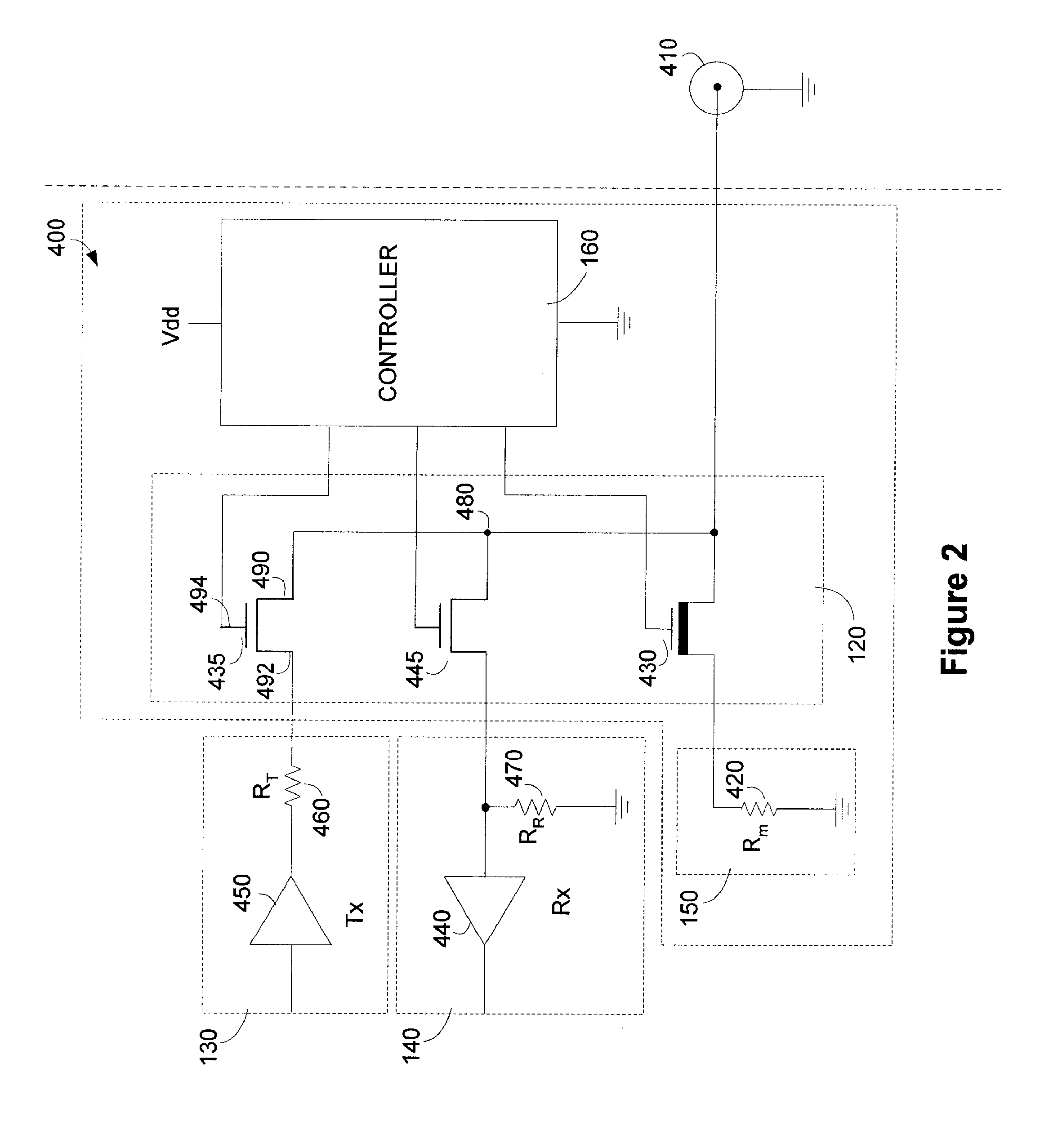Impedance control for signal interface of a network node
a technology of impedance control and signal interface, which is applied in the field of wired communication systems, can solve the problems of affecting the transmission of signals over the medium, affecting the performance of the network, and taking time to adapt to such changes, so as to minimize or avoid the disruption of signals
- Summary
- Abstract
- Description
- Claims
- Application Information
AI Technical Summary
Problems solved by technology
Method used
Image
Examples
Embodiment Construction
[0018]FIG. 1 shows a block diagram of an Impedance Control Device 100 having a switch 120, a impedance matching circuit 150 and a controller 160. Also shown is a node 115 which includes a transmitter 130, a receiver 140 and a voltage reference 155. A network is connected through a signal interface 110 and the switch 120 to a node 115. With the switch 120 set to connect the transmitter 130 to the signal interface 110 (the switch 120 in the position shown in FIG. 1), the impedance at the signal interface 110 looking back into the switch 120 is preferably matched to the impedance looking in the opposite direction (i.e., away from the switch 120 and into the network). This impedance can be 50 Ohms, 75 Ohms, or any other impedance value, typically depending upon the impedance of the cable or wire connected to the network. The position of the switch 120 is selected by a controller 160. The controller 160 determines whether the node 115 is in transmit and receive mode and selects the posit...
PUM
 Login to View More
Login to View More Abstract
Description
Claims
Application Information
 Login to View More
Login to View More - R&D
- Intellectual Property
- Life Sciences
- Materials
- Tech Scout
- Unparalleled Data Quality
- Higher Quality Content
- 60% Fewer Hallucinations
Browse by: Latest US Patents, China's latest patents, Technical Efficacy Thesaurus, Application Domain, Technology Topic, Popular Technical Reports.
© 2025 PatSnap. All rights reserved.Legal|Privacy policy|Modern Slavery Act Transparency Statement|Sitemap|About US| Contact US: help@patsnap.com



